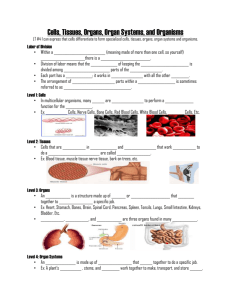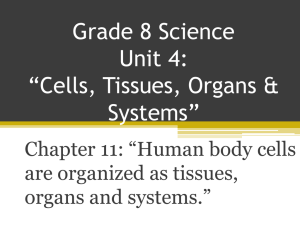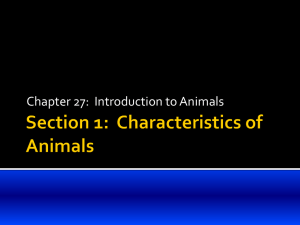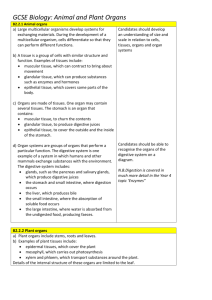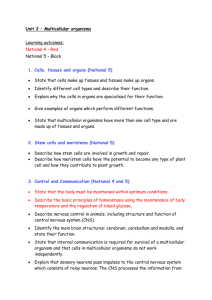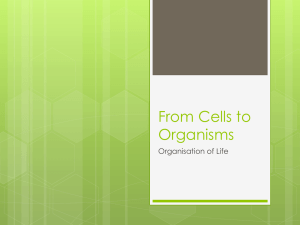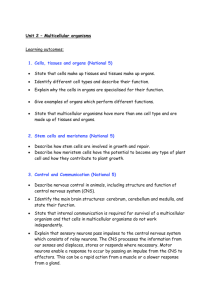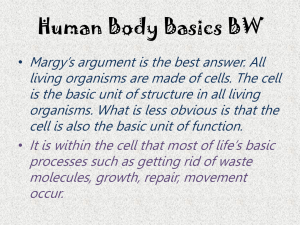Cellular organisation
advertisement
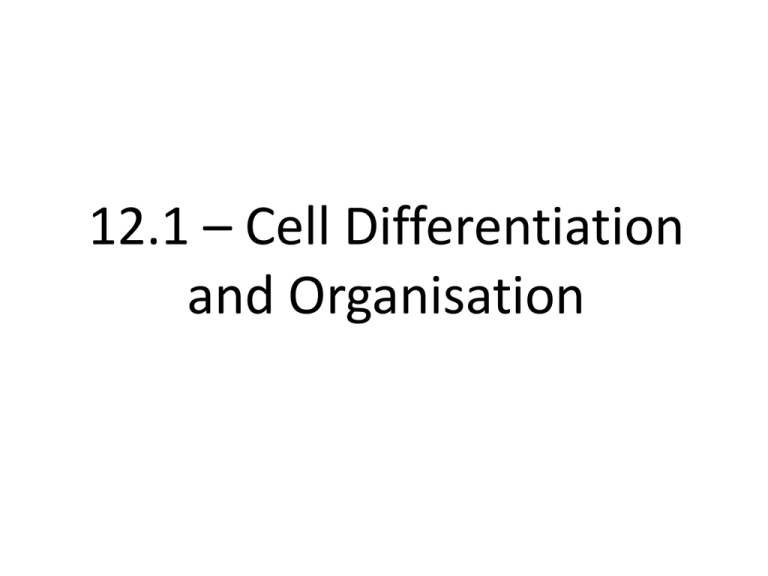
12.1 – Cell Differentiation and Organisation Learning outcomes Students should understand the following: • The cells of multicellular organisms may differentiate and become adapted for specific functions. • Tissues as aggregations of similar cells, and organs as aggregations of tissues performing specific physiological functions. Organs are organised into systems. What is a cell? A cell is the basic unit of life, from which larger structures such as tissue and organs are made. Unicellular organisms, such as bacteria, consist of just a single cell. Multicellular organisms consists of many cells – humans are made from an estimated 50 trillion cells! Specialised cells Most plant and animals are multicellular. The human body is made up of around 200 different types of cell, all working together. Most cells are specialized, meaning that each type of cell has a specific structure and function. All cells with a nucleus contain the same genes, but different cells activate different genes so they only produce the proteins they need. How do animal cells specialise? In animals, the first type of cells in the developing embryo are stem cells. These are unspecialized cells that go on to form all the different cell types in the adult. red blood cell nerve cell stem cell sperm cell muscle cell How do plant cells specialise? Unlike animals, many plant cells retain the ability to differentiate and specialise throughout their life. These cells are found in tissues called meristems. meristem cell root cell leaf cell sieve cell Cell differentiation • Differentiated cells are specially adapted to their function palisade cell ciliated epithelial cell Tissues • Similar cells are grouped into tissues Xylem – made up of a number of cells. Transports water and provides support Epithelial tissues – single layer of flat cells lining a surfaces of organs and often have a protective or secretory function e.g. Alveoli and ciliated epithelium that lines trachea. Organs • An organ is a group of different tissues that work together to perform a particular function. Leaf Lungs When is a structure an organ? • Blood capillaries are not organs but veins and arteries are. WHY? • All 3 structures have the same major function (transport of blood). • Capillaries are made up of only one type of tissue – epithelium • Arteries and veins are made up of many tissues – epithelial, muscle and connective. Organ systems Organs work together to form organ systems – each has a particular function. • Circulatory system (heart and blood vessels) – transport of gases and other substances around the body. • Respiratory system (lungs, trachea, bronchi) – gas exchange. • Digestive system (salivary glands, oesophagus, stomach, duodenum, ileum, pancreas and liver) – digests and processes food. • Shoot system (leaves, buds, stems, flowers) – all have different functions Learning outcomes Students should understand the following: • The cells of multicellular organisms may differentiate and become adapted for specific functions. • Tissues as aggregations of similar cells, and organs as aggregations of tissues performing specific physiological functions. Organs are organised into systems.



